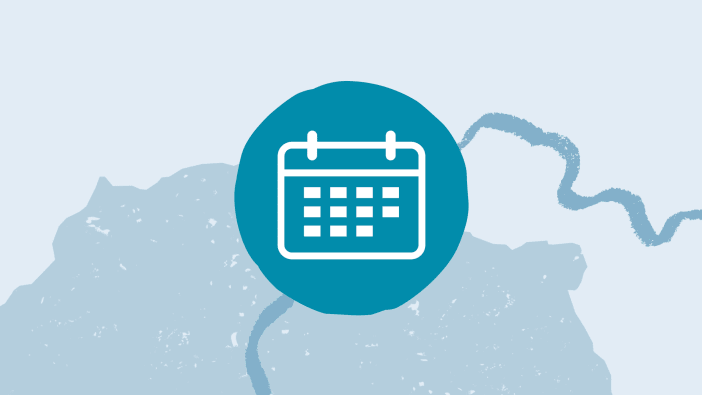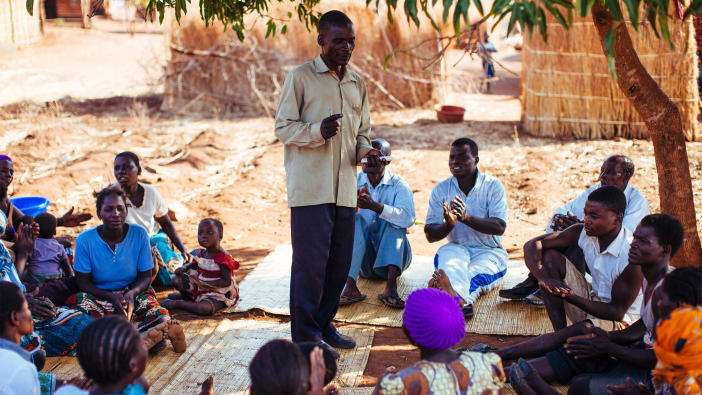by Arline Poubel e Silva and Suzy da Silva Cyrillo.
In most cultures, people hide the problem of violence within the family. This means that little is known about the level of violence that affects families. Ill-treatment within the family has increasingly come to the attention of health services, but is rarely included in community programmes for health and education. However, the majority of cases are not even reported. This means that those committing the violence are not made responsible for their actions. Often they do not even realise that they have committed a crime.
At the beginning of the last decade in the United States, for example, one and a half million cases of ill-treatment against children and adolescents were reported, with one thousand deaths annually. It is estimated that the actual number of cases was 20 times higher. In many developing countries the problem is rarely reported.
The term domestic violence is used to describe any violent attitude or neglect within the family. The victims may suffer from all kinds of physical and mental problems – including stress, sleeping problems, flashbacks to the trauma, aggression, social isolation, self-destructive behaviour, depression and phobias. Some may even commit suicide.
Poverty and lack of education may increase the level of domestic violence. Other individual, family, community and social factors can also be involved. However, the abuse of power over defenceless family members is always present. Women, adolescents, children and those with disabilities are the most frequent victims.
Definition of ill-treatment
Physical abuse involves the intentional use of physical force, with the purpose of causing pain. Sometimes the physical abuse results in death. Babies are at risk from the ‘shaking baby syndrome’. Here an adult violently shakes the child, generally to make the baby stop crying. This can cause brain damage and sometimes death.
Child sexual abuse describes situations where a child or adolescent is used for sexual pleasure, either by an adult or by an older child. The abuse may include touching, sexual exploration, forcing the child to watch pornography, or a sexual act, with or without violence.
This abuse is based on a relation of power. However, violence is not always involved. The abuser can win the participation of the child using various strategies:
- games leading to sexual contact
- bribery, using sweets or presents
- persuasion, by telling the child that unless they agree to sexual contact, the abuser will not like the child any more
- shared secrets, where small children are told they are ‘special friends’
- physical force – used only when other strategies fail.
Sexual abuse causes physical, psychological and social damage, even though some victims do not show any visible signs of these effects. The victim may suffer for the rest of their life if the effects of the abuse are not treated adequately.
Emotional damage While not usually as severe as physical or sexual abuse, people can also suffer emotional damage. Family members are often not aware that they are harming a child in this way. The following kinds of behaviour can cause long term damage to a child’s self-esteem and well-being:
- when a child does not receive emotional support through physical affection by touch, affectionate words, encouragement and ongoing interest
- when a child is always contradicted, their views denied, their actions rejected and when they are always being criticised
- when unrealistically high expectations of performance at school or work are made which the child cannot reach
- when excessive protection or hygiene demands a high performance from the child.
This kind of damage is little researched or understood and is often linked with other kinds of abuse. The victims are mostly children and women, but also the elderly.
Helping victims
Cases of domestic violence ideally need to be treated by professionals, since inadequate help can lead to further problems. However, when this is not available, friends who are willing to listen and give support can help. Giving evidence can be damaging to the victim so, again, expert help is recommended in order to minimise the damage. The sooner ill-treatment is identified and tackled, the greater the chances of preventing further violence and treating violent people successfully.
How can non-professionals help?
At first it is important to listen carefully to the victim and to believe them. Go with them to an official department to make their case and help them to seek professional help. Usually victims are afraid to seek help, but with such support, they may manage to move forward.
Never ask the victim to ignore or forget what happened. You should not ask victims of violence simply to forgive those who ill-treat them, particularly if the violence continues. The question of forgiveness is between the person and God. Instead, the victim needs to be believed and able to talk openly. Shame and guilt are among the most common feelings experienced by victims of domestic violence. They think that no-one can understand them. Never let the victim think that you believe they are to blame for what has happened.
Adults who want to protect children and adolescents ought to look out for any signs of violence and help them. Encourage them to seek help and to talk with someone they can trust about what is happening. In many cases the child may be too afraid to seek help. If any ill-treatment is suspected, do not ignore it but, for the sake of the victim, investigate or ask for help.
Suggestions for victims
Here are some suggestions for security and protection:
- Be prepared for violence and have a plan of action. For example, run to a corner and crouch, protecting your face and head, covering them with your arms and hands.
- Do not run to where your children are, as they could end up being hurt as well.
- Avoid fleeing without your children, as they could be used for emotional blackmail.
- Teach your children to ask for help and to leave the place in the event of violence.
- Avoid being alone with the violent person in places such as the kitchen and the bathroom where there are knives, dangerous objects, dangerous surfaces and little space.
- Avoid places where there are weapons. Never attempt to use a weapon to threaten the violent person. It could be used against you.
- Keep with you, at all times, details of where to find help – particularly telephone numbers.
- Find out if there are any secure places near your house where you can stay until you get help.
- Prepare a bag of clothes and other essentials for yourself and your children, and leave it with a neighbour or friend so it is available if you have to abandon your house.
- Keep copies of important documents in a safe place outside the home.
- Tell people you trust about the situation. Arrange signals with them to tell them if you are in danger.
- If you are wounded, go to a hospital or health post. If you hide the fact that you are a victim of violence, nobody can help you.
- Seek help. Do not isolate yourself. You are not alone, and there are people who can help you.
Arline Poubel e Silva is a psychologist and is the Regional Advisor for Brazil and the Southern Cone, Tearfund. E-mail: [email protected] Suzy da Silva Cyrillo is a psychologist and consultant for Tearfund. E-mail: [email protected]









